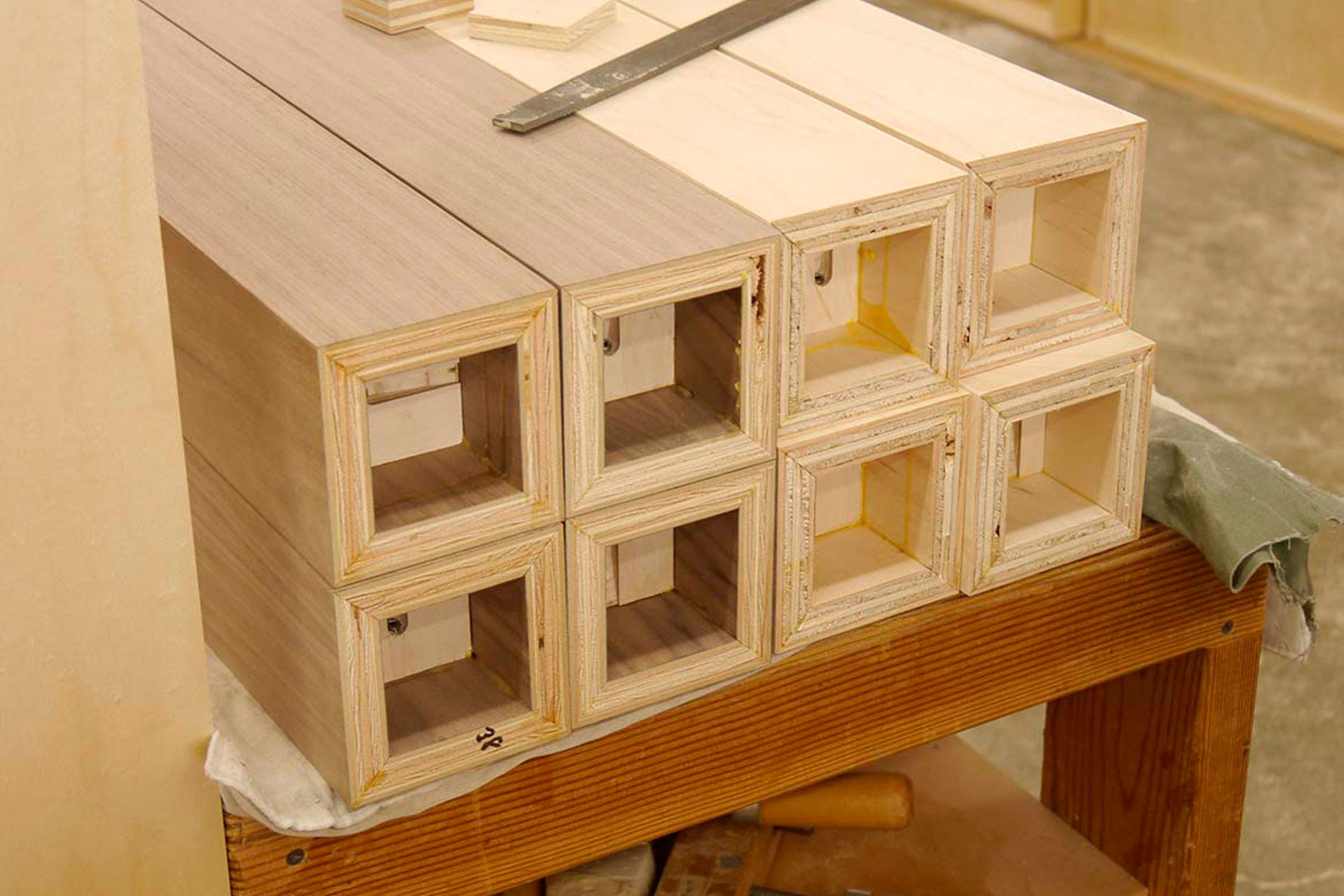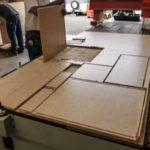
Alan Butler AIA
As architects, it’s critical to keep up with new materials and emerging fabrication techniques. The materials we use, the way they go together and their application in buildings is constantly changing. In an effort to better understand the potential of new fabrication tools, TLCD Architecture purchased a laser cutter at the beginning of 2014. Small, but powerful and precise, it’s an incredible tool for making mockups and architectural models. We can cut wood, plastics and paper up to ½” thick and and to a maximum size of 18”x 24”. We are now able to quickly produce models and look at various design options very quickly versus the time consuming process of hand cutting mat board with a utility knife. Recently, we’ve been experimenting with designs for screen elements at our new office in the Museum on the Square building in downtown Santa Rosa. We’ve been producing some beautiful prototypes of the screens, but the question arises… how do we make the full size version?
So as any curious design firm would do, we set out exploring. Last week, Nick Diggins and I visited Gus Dering’s cabinet shop in Cotati to see a CNC (Computer Numerically Controlled) Router in action. The shop is called Sonoma Country Pine, but we didn’t see any cabinetmakers with hand planes making colonial style cabinets. Rather we saw the Selexx Chief CNC Router in action. This machine has an eight bit rotating tool head that can cut, drill and route all the parts for a cabinet body in a matter of minutes. The machine holds the plywood in place with the suction of two vacuum pumps, through a sacrificial layer of low density fiberboard. With incredible precision it can cut all the parts to tolerances of thousandths of an inch. Because of the sophisticated programming there is little waste, sometimes only the sawdust from the router bit! The machine is so precise, it can produce “miter folded” applications leaving the last 3/1000th of the veneer face in tack, so plywood sheets can be folded with seamless corners. With the CNC Router, Gus produces cabinet parts for his own shop and several others.
A few days prior, Nick Diggins and TLCD Principal, Don Tomasi visited the shop of Klaus Rappensberger, a Sonoma County sculptor and craftsman. They discussed the option of making screens from sheet steel and cutting the screen patterns with a water jet cutter. We are now considering what we can produce in-house with our laser cutter, or possible options with these other digital technologies. The possibilities and potential are endless. The more we understand, the more we can do.




